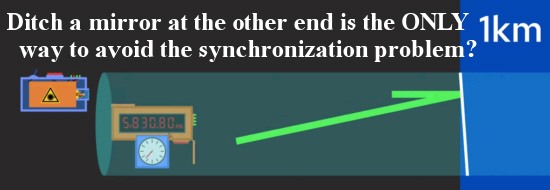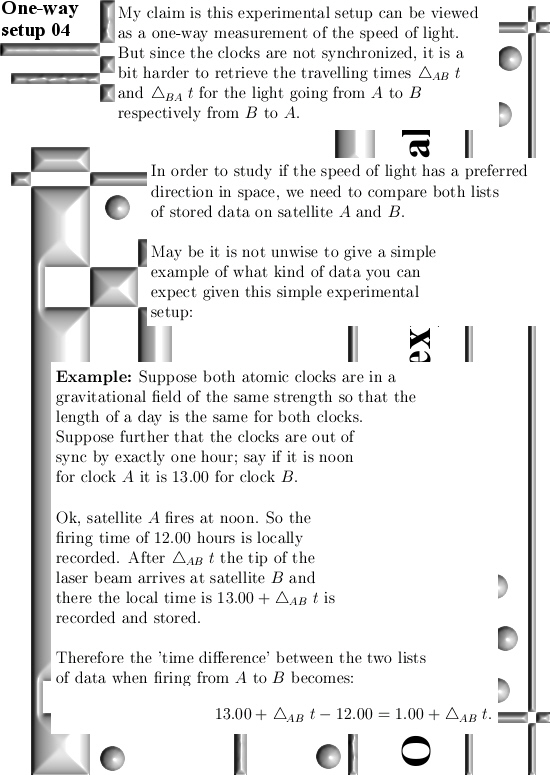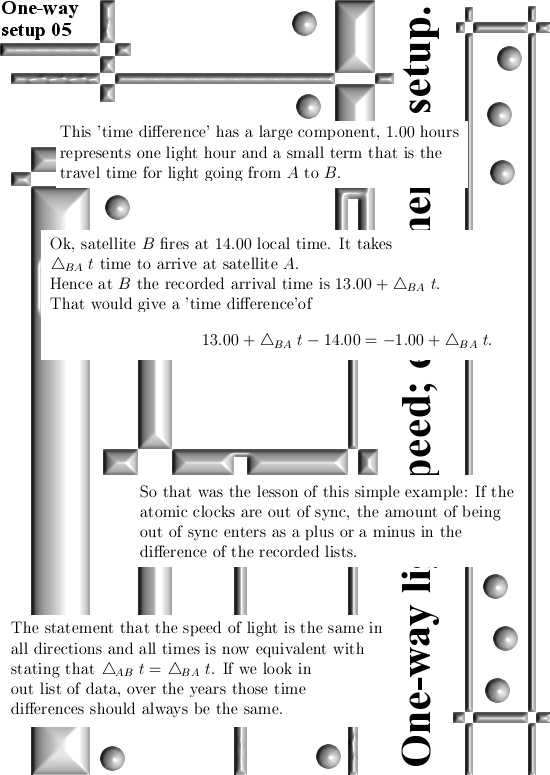A couple of days ago all of a sudden while riding my bicycle I calculated what the so called directional derivative is for 3D & 4D complex numbers. And it is a cute calculation but I decided not to write a post about it. After all rather likely I had done stuff like that many years ago.
Anyway a day later I came across a few Youtube video’s about the directional derivative and all those two guys came up with was an inner product of the gradient and a vector. Ok ok that is not wrong or so, but that is only the case for scalar valued functions on say 3D space. A scalar field as physics people would say it. The first video was from the Kahn academy and the guy from 3Blue1Brown has been working over there lately. It is amazing that just one guy can lift such a channel up in a significant manner. The second video was from some professional math professor who went on talking a full 2.5 hour about the directional derivative of just a scalar field. I could not stand it; how can you talk so long about something that is so easy to explain? Now I do not blame that math professor, may be he was working in the USA and had to teach first year math students. Now in the USA fresh students are horrible at math because in the USA the education before the universities is relatively retarded.
Furthermore I tried to remember when I should have done the directional derivative. I could not remember it and in order to get rid of my annoyance I decided to write a small post about it. Within two hours I was finished resulting in four pictures of the usual 550×775 pixel size. So when I work hard I can produce say 3 to 4 pictures in two hours of time. I did not know that because most of the time I do not work that fast or hard. After all this is supposed to be a hobby so most of my writing is done in a relaxed way without any hurry. I have to say that may be I should have taken a bit more time at the end where the so called Cauchy-Riemann equations come into play. I only gave the example for the identiy function and after that jumped to the case of a general function. May be for the majority of professional math professors that is way to fast, but hey just the simple 3D complex numbers are ‘way to fast’ for those turtles in the last two centuries…
Anyway, here is the short post of only 4 pictures:
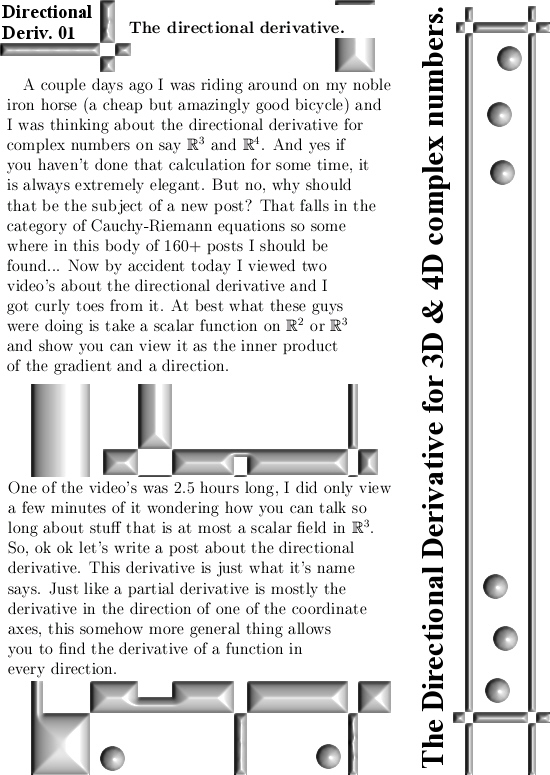
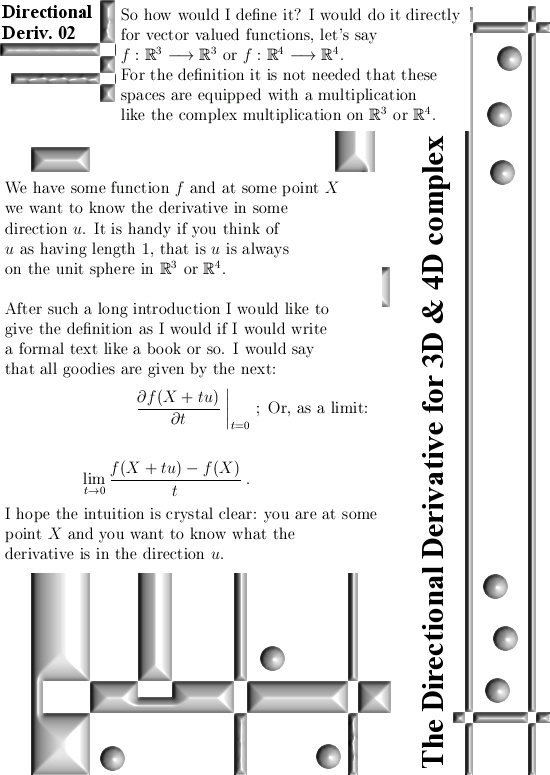
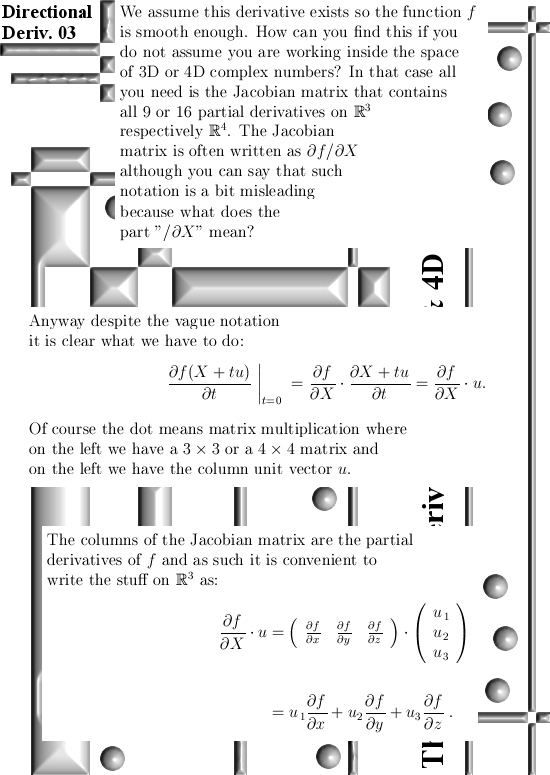
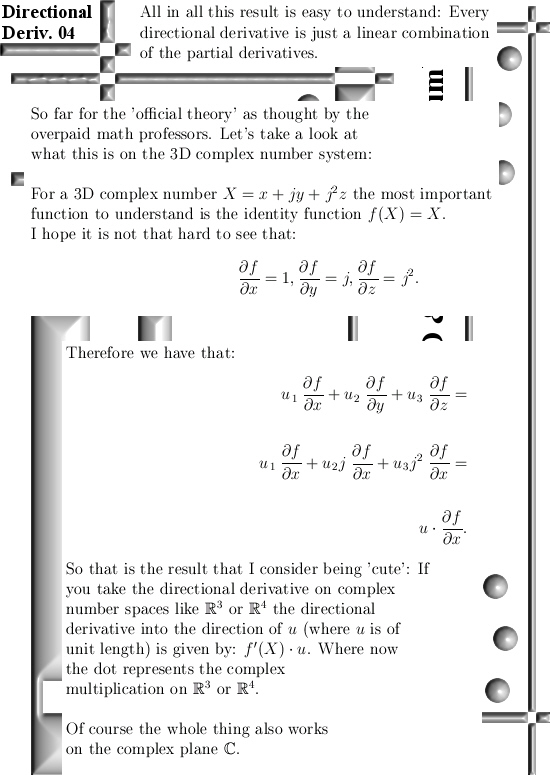
Should I have made the explanation longer? After all so often during the last years I have explained that the usual derivative f'(X) is found by differentiating into the direction of the real numbers. At some point in time I have the right to stop explaining that 1 + 1 = 2.
Also I found a better video from the Kahn academy that starts with a formal definition of the directional derivative:
At last let me remark that this stuff easily works for vector valued functions because in the above limit you only have to subtract two vectors and that is always allowed in any vector space. And only if you hang in a suitable multiplication like the complex multiplication of 3D or 4D real space you can tweak it like in the form of picture number 4 above.
That was all I had for you today, this is post number 166 already so I am wondering if this website is may be becoming too big? If people find something, can they find what they are searching for or do they get lost in the woods? So see you in another post, take care of yourself & till the next post.
